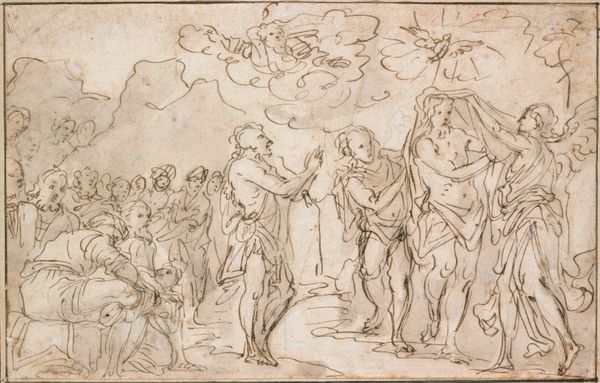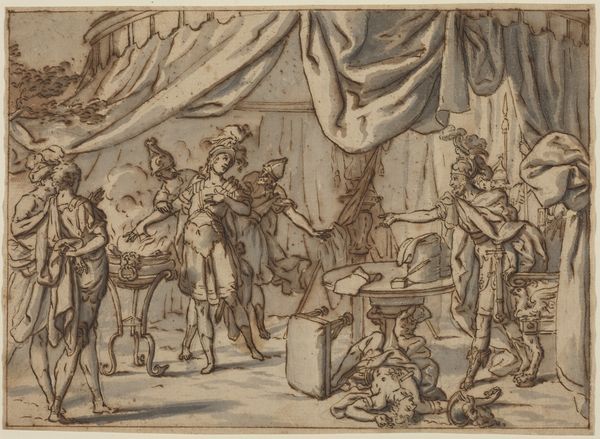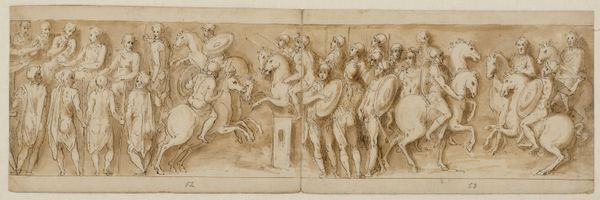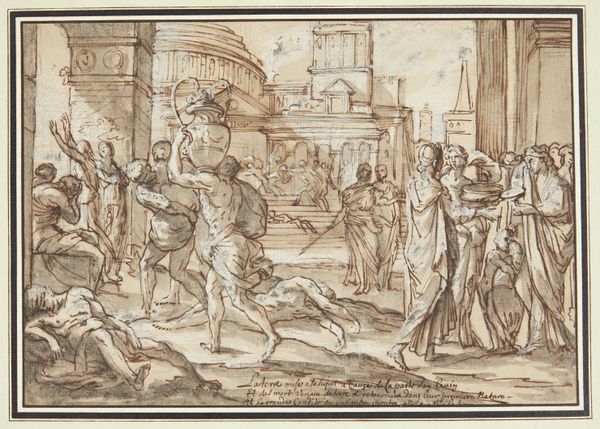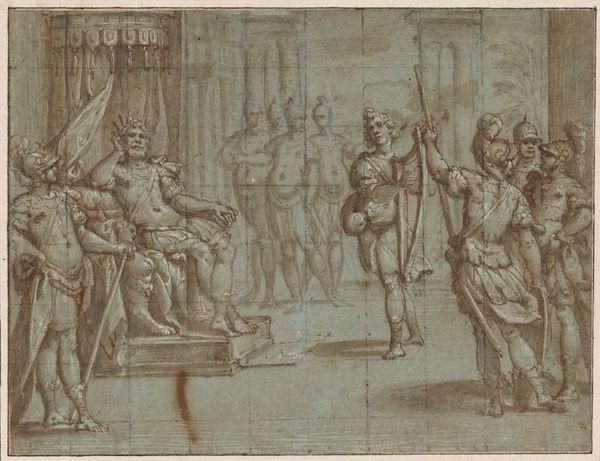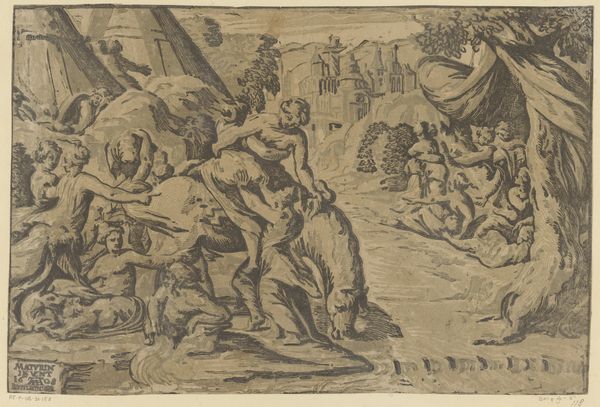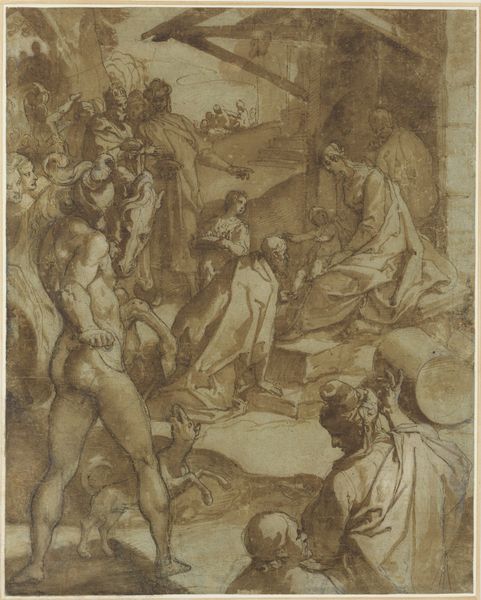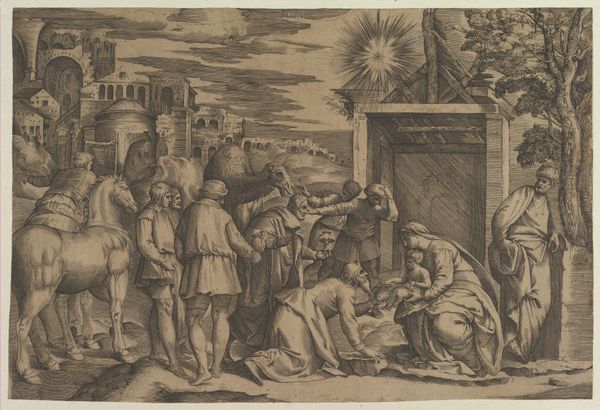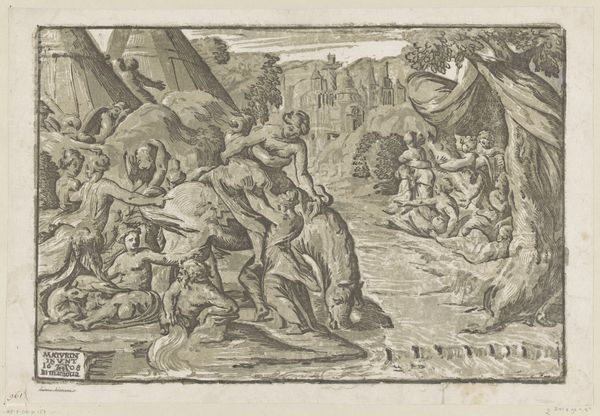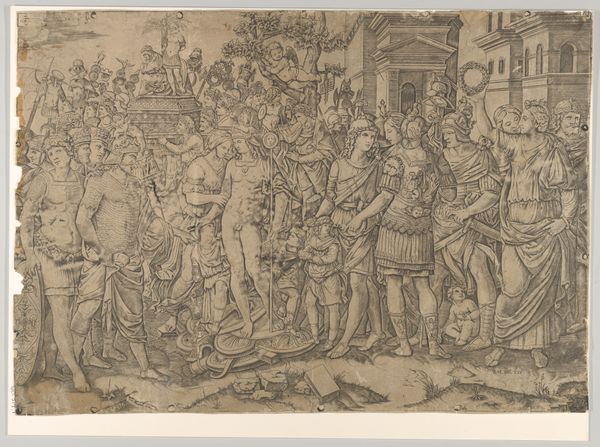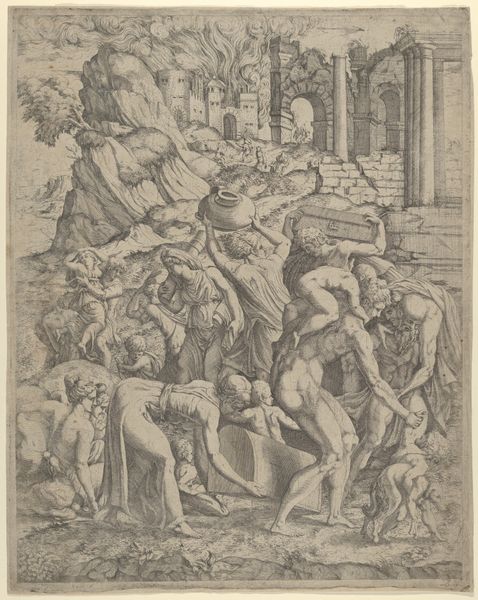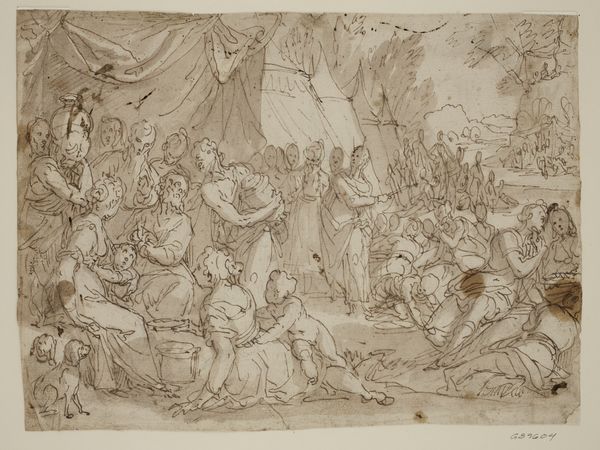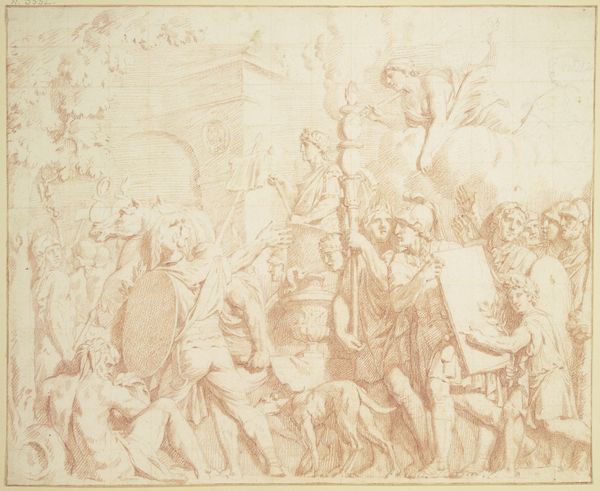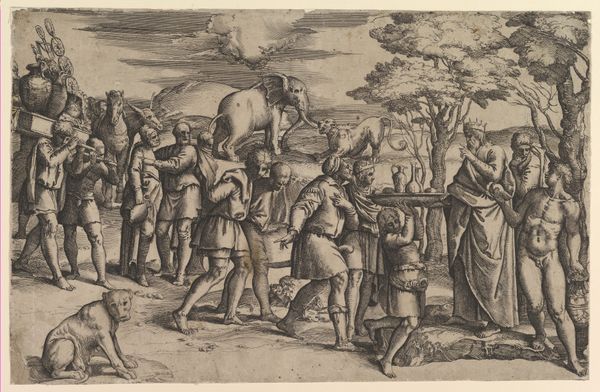
drawing, tempera, print, paper, ink, chalk, pen, black-chalk
#
drawing
#
narrative-art
#
ink painting
#
tempera
# print
#
figuration
#
paper
#
11_renaissance
#
ink
#
ancient-mediterranean
#
chalk
#
line
#
pen
#
history-painting
#
italian-renaissance
#
black-chalk
Dimensions: 109 × 194 mm
Copyright: Public Domain
Curator: Welcome. Before us is "Christ Entering Jerusalem," an ink and chalk drawing created between 1595 and 1599 by Andrea Boscoli, part of the collection here at The Art Institute of Chicago. Editor: The first thing that strikes me is the sheer energy—the dynamism of the composition. It’s rendered with such incredibly thin lines; I feel like the image is almost vibrating with excitement. Curator: Indeed. The artist has masterfully used line to create a sense of movement. Note how the directional lines converge on Christ, emphasizing His central importance in this narrative scene. Consider also, how Boscoli implemented a few contrasting directional movements, that emphasize Christ is riding against the "current," per se. Editor: I’m immediately drawn to the figure of Christ on the donkey. The donkey itself becomes symbolic, of course. A humble creature, signifying Christ’s humility and peace, rather than a conquering warrior. It is interesting that even those with supposed elevated rank and position follow and prostrate. The imagery becomes a testament to faith in something higher. Curator: Precisely. The image can be broken down through an analytical lens, that shows us how the forms that describe Christ stand alone when compared to those surrounding Him. This draws our immediate and long term focus towards that very compositional form. But what kind of cultural impacts were formed upon people through the lens of its content at this time period. How effective was it at convincing observers to view the image's story with good favor? Editor: Given the time it was created, the Italian Renaissance, I would propose a fair level of cultural integration would exist for the observer to relate with its story and message. One can feel the historical weight here, this triumphant yet ultimately tragic moment just before the Passion. These aren’t simply aesthetic choices; they're imbued with deep religious and cultural meaning. Curator: It’s a compelling point that shows how an aesthetic analysis alone doesn't encapsulate the work’s total meaning, rather acts a springboard towards higher understanding, by questioning its significance in relation to other compositional bodies. Boscoli’s deliberate manipulation of line and form helps convey this scene on both symbolic and structural levels. Editor: A fruitful reflection that emphasizes a valuable truth when appreciating any piece of art. Thank you. Curator: My pleasure, hopefully more insight can be drawn with further contemplation.
Comments
No comments
Be the first to comment and join the conversation on the ultimate creative platform.
